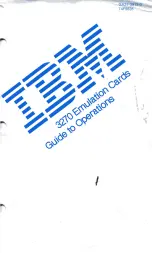
Quatech CompactFlash Card User’s Manual
SSCF-100 / SSCFR-100
- 5 -
3. Installing the SSCF-100 / SSCFR-100
3.1 Windows CE, PocketPC
There is no need to install any software for Windows CE or PocketPC. Simply insert the SSCF-
100/SSCFR-100 card and it will appear in a list when you set up a “Connection.”For more
information about setting up a “Connection” see the manual for your handheld device.
3.2 Windows 95, 98, 98SE, Me, 2000, XP
The “generic” serial drivers in these Operating Systems support the
SSCF-100/SSCFR-100
. Before inserting the
card, however, execute the SERIALSETUP.EXE program provided on the Quatech Data Communication CD in the
Serial Port Adapters\Drivers\Windows 95, 98, Me, 2000, XP for CompactFlash
directory.
3.3 DOS & Windows 3.1x
Operation in DOS or Windows 3.1 requires 3
rd
party Card and Socket Services drivers to be properly
installed and configured. Follow your software vendor’s instructions on how to do this.
The SSCF-100/SSCFR-100
requires no extra drivers to operate in DOS. Insertion of the card should
create a familiar “happy beep” as the host software configures the card as a standard DOS COM
port. Resource allocation and troubleshooting is all related to the 3
rd
party software and any issues
that may arise during configuration should be addressed to the vendors of this software. The SSCF-
100/ SSCFR-100 have been tested with: SystemSoft Cardware and Award Cardwizard
4. SSCF-100 Register Interface
The SSCF-100 and SSCFR-100 both appear as 5V cards to the host system because Vs1 and Vs2 are
not connected. Thus the host defaults to 5V when possible to provide the strongest RS-232 output
signals, and therefore the best noise margins. The Card Information Structure (CIS) does not define
any 3.3V tuples because some platforms will also take this as a sign to run at 3.3V even when 5V is
available. On a PDA or HPC, the host will power the card at 5V if it is available, or at 3.3V if that is
the only option (despite there being no 3.3V tuple entries).



























